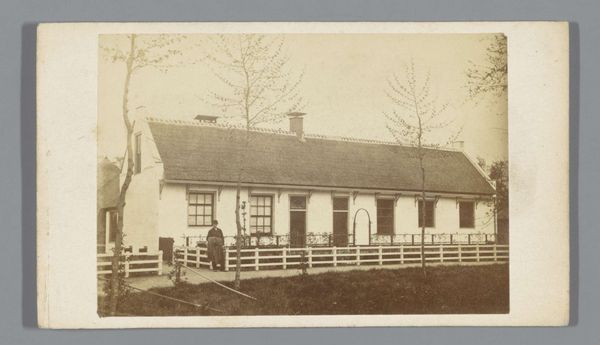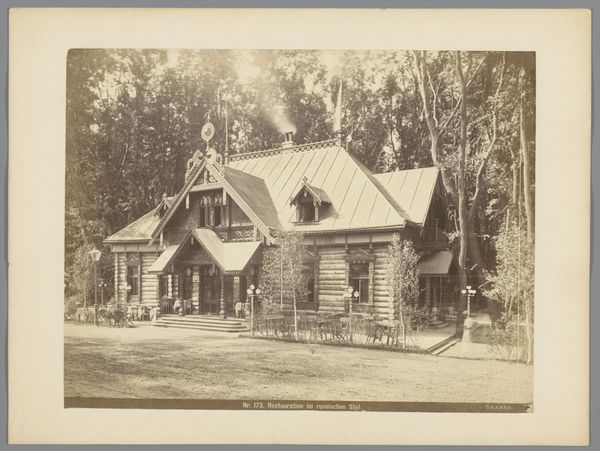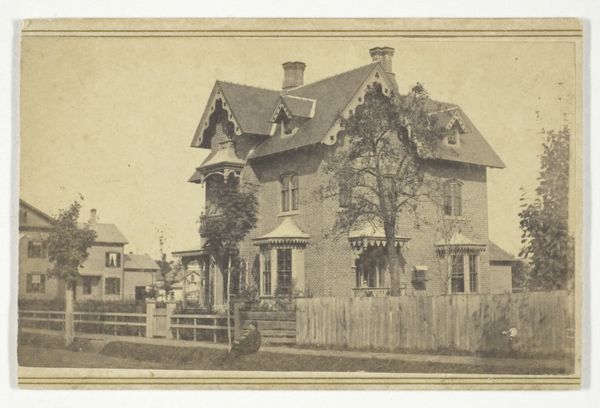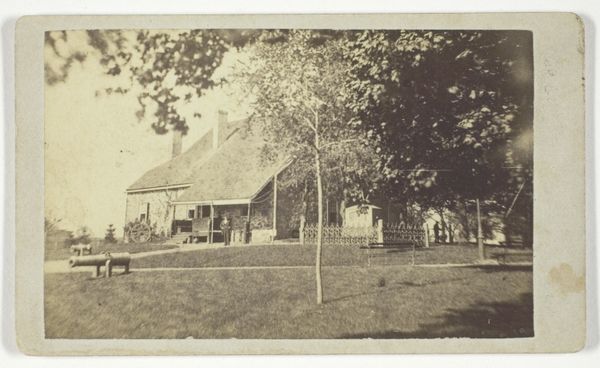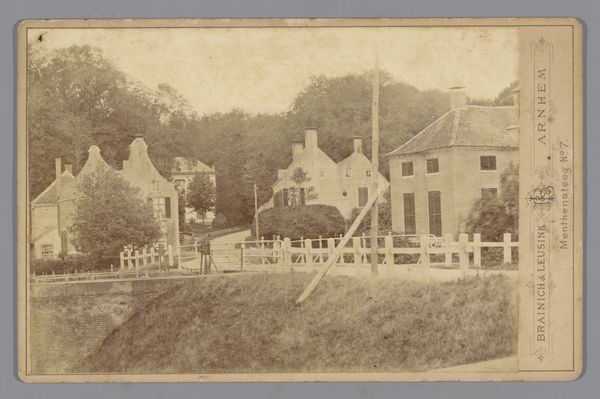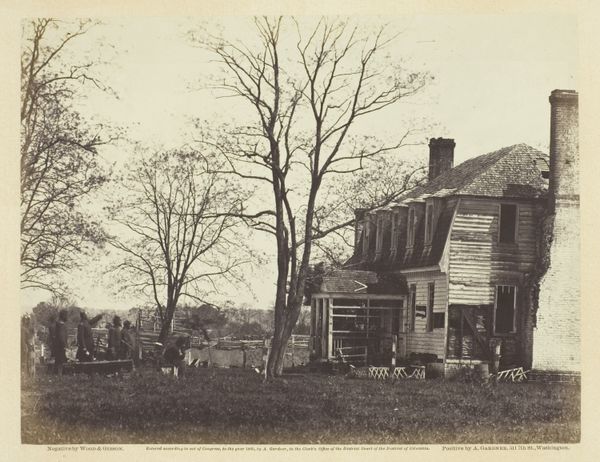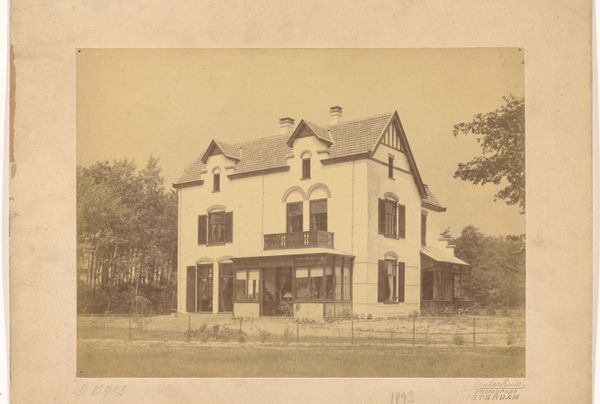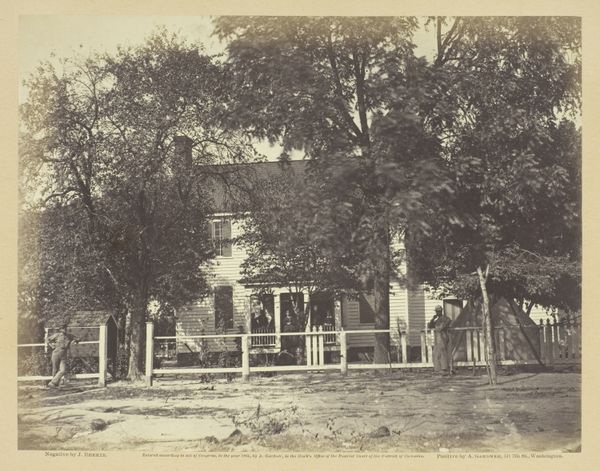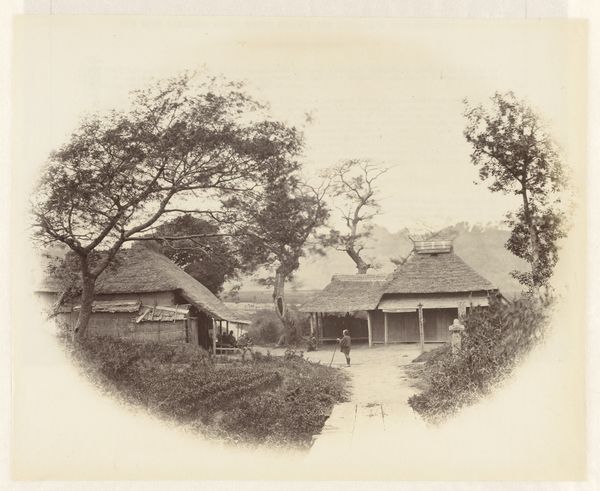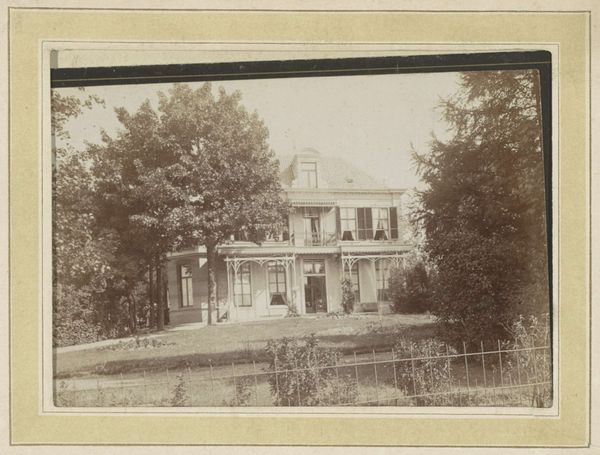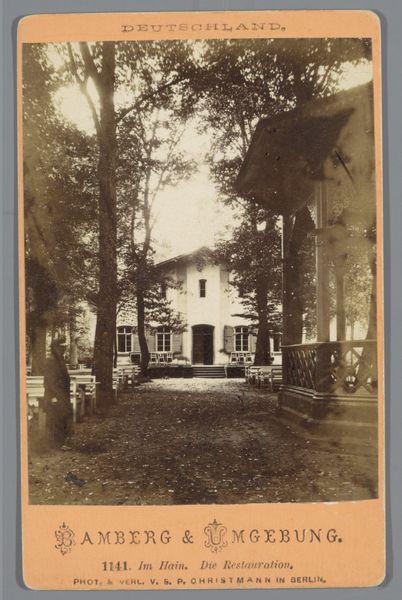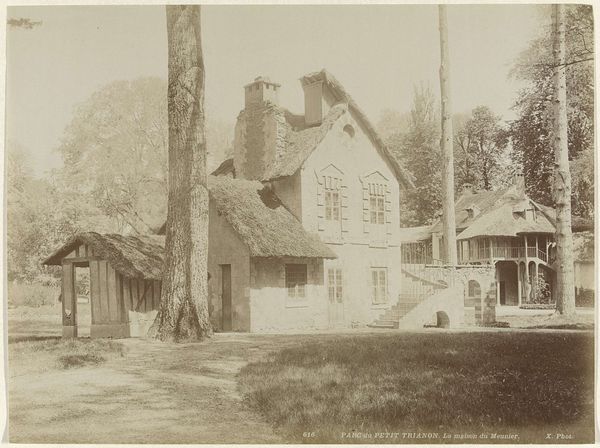
Exterieur van een boerderij (vermoedelijk) nabij Deventer c. 1880 - 1900
0:00
0:00
photography, gelatin-silver-print
#
dutch-golden-age
#
pictorialism
#
landscape
#
photography
#
gelatin-silver-print
#
genre-painting
#
realism
Dimensions: height 58 mm, width 90 mm
Copyright: Rijks Museum: Open Domain
Curator: Let's delve into this gelatin silver print, attributed to Johann Heinrich Martin Bosse, possibly titled "Exterior of a Farmhouse near Deventer." It's estimated to have been taken between 1880 and 1900, placing it at the tail end of the 19th century. Editor: The sepia tones give it such a timeless, almost dreamlike quality, don't you think? There’s a quiet dignity to this humble scene; I find myself imagining the stories held within those walls. Curator: Indeed. Considering its placement within the late 19th century, the photograph is a poignant reflection on genre painting traditions, especially since realism became a critical artistic statement during a time of great social change. Editor: I wonder about the inhabitants of that farmhouse. Is that their washing hanging out to dry? And the climbing foliage makes it look almost alive, reclaiming the building inch by inch. You can feel how tightly entwined they must be to their environment, a life built by the rhythms of the seasons. Curator: Absolutely, and that’s where intersectional analysis proves insightful. Rural genre scenes, while seemingly simple, reveal a layered narrative about labor, class structures, and human engagement with the land. How does access to property intersect with environmental dependence in the Dutch countryside? This piece invites us to think critically. Editor: It's interesting how Bosse chooses his frame; he leaves so much out of it that my imagination wanders trying to piece the rest of it all together. You know, the limitations of early photography only strengthen that. There is only a single frame with light and shadow to capture one tiny piece of all that life, love, loss... Curator: And his decision to photograph farmhouses also contributes to our understanding of the aesthetics of labor at that period. In what ways does focusing on humble buildings counteract the canonization of high art architecture? Bosse positions us at the crossroads of the real and the representational. Editor: To me, this piece seems a reminder that simple living offers more than what capitalism may otherwise have in mind for all the occupants of the pictured home. A counter-narrative, perhaps, of peaceful existence that I hope continues long beyond our thoughts of it today. Curator: Exactly. This is more than a landscape study; it's a historical record and a catalyst for present-day inquiries, pushing us to consider how seemingly bygone eras resonate with ongoing discussions of identity and sustainability. Editor: So true. This artwork is an anchor to the past as well as an inspiring perspective toward what may be found.
Comments
No comments
Be the first to comment and join the conversation on the ultimate creative platform.
